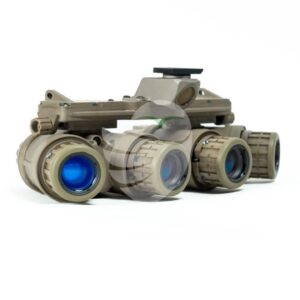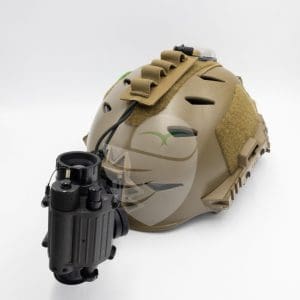WHAT’S INCLUDED?
One Ground Panoramic Night Vision Goggle (GPNVG); Soft bag; battery pack and cable; accessory kit; spec sheets;
TUBE SPECS
Contact us today for tube photo requests, or for more specific tube specs. (It is to many specs to list all of them and will clutter the listing)
TUBE SELECTION
L3Harris unfilmed image tubes are for those that simply need the best. The unfilmed construction leads to higher specs on average, which then in turn leads to the best low light performance. Whether you’re operating under thick tree cover, on a moonless/overcast night, or just enjoy the finer things in life, selecting L3Harris image tubes will ensure you have the ultimate extreme low light performance.
Selecting an image tube brand isn’t the only decision to be made. Within each brand, specs and cosmetics will still vary tube to tube. Of course, if you want us to utilize our expertise and select on your behalf, we are happy to do so. However, most buyers want to hand select their own image tubes, which is why we list tube photos and specs for all of our in stock inventory. If you’re ordering on a lead time you can always put “hand select” in the order notes section as well to pick your tubes when they arrive to us from the manufacturer. It’s easy to go down the rabbit hole so to speak with specs, but to make it stress-free we will cover the specs we list, what they mean, and which specs we pay the most attention to.
For our in stock inventory, we list the center resolution (LP), SNR, EBI, Halo, and FOM.
Center resolution is much like resolution on a screen, the higher the better. However, for a headborne system, a resolution over 64 is indistinguishable to the naked eye. Therefore, just look for a resolution of 64+.
SNR, or Signal to Noise Ratio, is essentially low light resolution. It is the single most important spec, in our opinion, for determining low light performance. For Photonis and Elbit tubes, seek out an SNR of 27+ (they usually cap out around 33-34). L3Harris tubes tend to have higher SNR values across the board. If deciding on an L3Harris image tube, look for an SNR of 33+.
EBI, or Equivalent Background Illumination, is essentially the lowest light level that a tube can produce a usable image. Sounds important right? It is, but the importance is usually grossly overstated. The truth is, anything UNDER 2.5 will be just fine for 99% of users. The only exception is for those that will strictly be utilizing their device for astronomy. If that is the case, look for an EBI under 1.5.
Halo is the ring or bloom around a light source when viewed through an image tube. The lower the halo value, the smaller the bloom. Keep this value under 1. Note that Photonis doesn’t always provide halo values, but rest assured they routinely exhibit low halos from our experience.
FOM, or Figure of Merit, is obtained by multiplying center resolution by the SNR. We recommend ignoring this value when selecting a tube. Instead, examine its components separately as it doesn’t always accurately depict a tube’s performance.
To keep it short and sweet, pick the highest SNR tube available that is fairly clean, has a resolution of 64+, an EBI under 2.5, and a halo under 1. If you stick to this outline, you’ll end up with an image tube that is more than capable of performing in any situation you may find yourself in.
SPECIFICATIONS
Features:
- 97° verse traditionally 40°
- Powered via Battery pack
- Waterproof
- Approximately 30+ hours of battery life
- 10 year warranty and limited lifetime service
TECHNICAL SPECIFICATIONS
| Field of View | 97° |
| Magnification | 1x |
| Diopter Adjustment | -0.5 |
| Eye Relief | 25mm |
| Submersible | 66 feet |
| Objective Lens | 27mm, f/1.2 |
| Focus Range | 18″ to infinity |
| Power Source | Battery pack |
| Operation Time | 30+ hours |
| Weight | 765 g (27 oz) |
RESTRICTIONS
This product is regulated by International Traffic in Arms Regulations and can not be shipped outside the USA.





